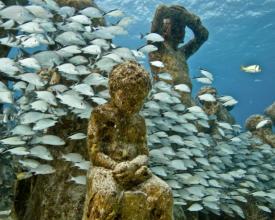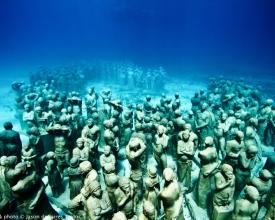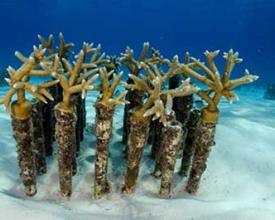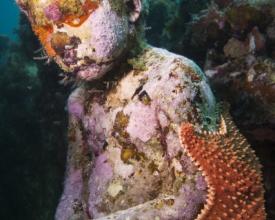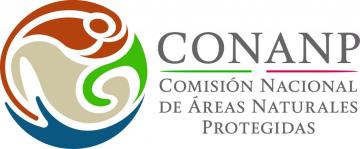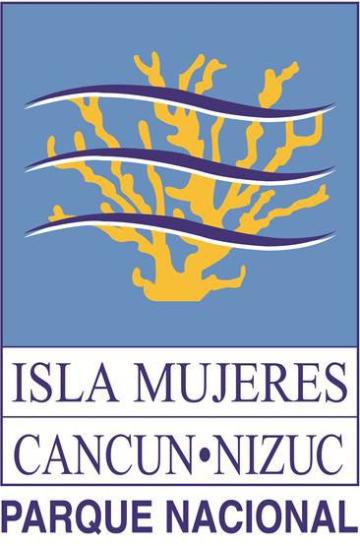
Atténuer l'impact de l'homme sur les récifs coralliens
Solution complète
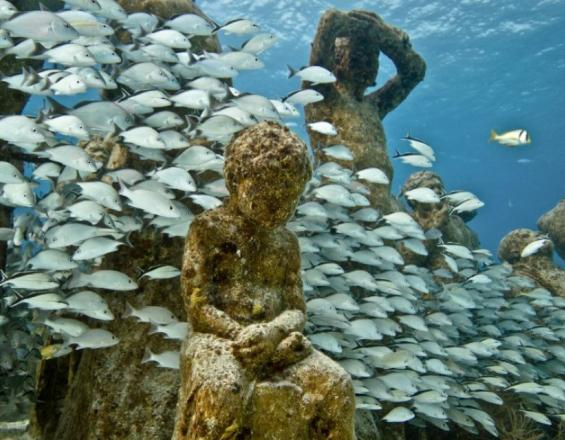
Evolution silencieuse (25)
Jason deCaires Taylor
Afin d'atténuer la pression humaine sur les récifs du parc national et de permettre un temps de récupération suffisant, un musée d'art sous-marin a été créé. Il attire les visiteurs loin des récifs naturels tout en créant de nouveaux habitats artificiels. L'interaction évolutive entre l'art et les créatures marines contribue à accroître à la fois la conscience écologique des visiteurs et la biomasse globale du système récifal.
Dernière modification 30 Sep 2020
6950 Vues
Contexte
Défis à relever
Pression sur les récifs naturels en raison du nombre élevé de touristes Le parc marin national est une attraction touristique aquatique qui accueille un grand nombre de visiteurs, ce qui exerce une pression considérable sur les récifs coralliens naturels, par exemple en raison des dommages critiques causés par les plongeurs expérimentés ou les personnes qui donnent des coups de pied ou touchent les coraux et les formations récifales.
Emplacement
Mexique
Caraïbes
Traiter
Résumé du processus
= sera ajouté = (disponible en espagnol)
Blocs de construction
Mentorat du personnel des parcs nationaux
Les praticiens locaux sont dotés d'une expertise technique en matière de conception de projets et de compétences en leadership : les formations individuelles et le mentorat sont adaptés aux besoins et aux ambitions des boursiers, tandis que les ateliers de groupe se concentrent sur des stratégies de communication efficaces, la prise de parole en public, la négociation et la résolution de conflits, la défense des intérêts et le développement personnel.
Facteurs favorables
NA
Leçon apprise
NA
Musée d'art subaquatique
Des sculptures en béton grandeur nature forment une structure de récif artificiel que la vie marine peut coloniser et habiter. Le musée contribue à réduire la pression exercée sur les récifs naturels en redirigeant les visiteurs vers d'autres sites. Le musée est divisé en deux galeries : la première, d'une profondeur de huit mètres, est adaptée aux plongeurs et aux amateurs de plongée avec tuba ; la seconde, d'une profondeur de quatre mètres, est réservée aux amateurs de plongée avec tuba.
Facteurs favorables
Coopération avec le secteur du tourisme pour rediriger les touristes des récifs naturels vers le musée d'art subaquatique. Connaissance approfondie de l'emplacement des habitats récifaux.
Leçon apprise
Les habitats artificiels contribuent à réduire l'impact humain sur les habitats récifaux naturels. Récupération plus rapide des habitats naturels affectés par les impacts humains. Une connaissance approfondie des conditions hydrométéorologiques locales - La conclusion d'accords avec les différentes parties prenantes est importante.
Restauration des récifs coralliens
Les projets de pépinière et de propagation du corail sont mis en œuvre pour réduire le temps de recrutement et de croissance et pour atténuer les impacts anthropogéniques et naturels. Cela permet d'accroître la diversité des espèces de coraux et la couverture corallienne globale, ainsi que la variété et l'abondance des poissons et autres organismes associés aux récifs.
Facteurs favorables
Soins continus de la pépinière pour améliorer la survie. Formation continue du nouveau personnel. Ressources pour l'acquisition d'équipement pour la création du musée. L'ambassade britannique, par l'intermédiaire de DEFRA, a fourni le financement initial, puis CONABIO a financé le projet de réhabilitation et la création de la pépinière corallienne - La coopération de la direction du parc avec d'autres institutions est nécessaire pour mettre en œuvre le projet et atteindre ses objectifs.
Leçon apprise
Détermination des sources de dégradation de l'habitat récifal. Communication et, si possible, coopération avec des spécialistes et des institutions de recherche. Implication du secteur touristique dans la mise en œuvre des activités de réhabilitation - Communication des progrès du projet à la communauté locale ainsi qu'au secteur touristique.
Ressources
Impacts
Les bio-indicateurs se sont améliorés, par exemple la couverture corallienne a augmenté, ce qui a entraîné une augmentation du nombre et de la quantité d'espèces de poissons. Les stratégies mises en œuvre pour créer d'autres lieux à visiter dans le parc national et la réhabilitation des zones dégradées donnent des résultats positifs. L'effet combiné de la diminution de la pression exercée par les touristes et de la restauration des zones endommagées à l'aide de coraux nourris diminue le temps de rétablissement des récifs naturels affectés. Compte tenu des effets actuels et futurs du changement climatique, la mise en œuvre de ces stratégies sera essentielle pour en atténuer les effets potentiels.
Bénéficiaires
industrie du tourisme, touristes, autorités des parcs nationaux
Histoire
disponible uniquement en espagnol
Connexion avec les contributeurs
Autres contributeurs
Jaime Manuel González Cano
Parque Nacional Costa Occidental de Isla Mujeres Punta Cancún y Punta Nizuc (PNCOIMPCPN)
